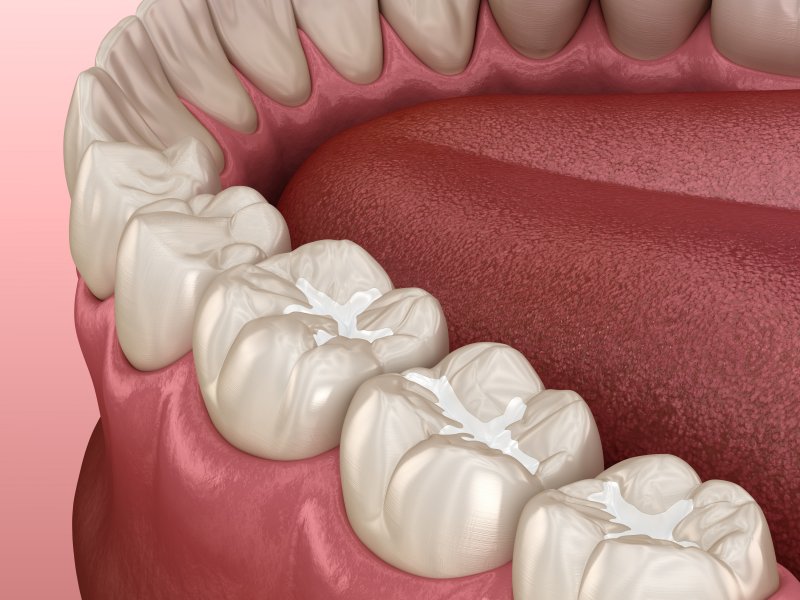
Dental fillings remain some of the most reliable forms of restorative treatment. Used by dentists to repair and restore decayed teeth, traditional amalgam was once the only material available to fix cavity-stricken teeth; however, much has changed in the dental field. Now, tooth-colored composite resin reigns supreme, providing patients with natural-looking results that are not only more visually appealing but also highly durable. But how long will these custom restorations last? Read on to learn about the average timeframe and what you can do to extend the life of your fillings.
What is the Average Lifespan of Dental Fillings?
Most restorations can remain in place for 5-15 years, but many factors can ultimately determine the length of time, such as:
- The material used to repair the tooth – Gold and amalgam can exceed 15 years; however, tooth-colored composite resin may last 10-15 years.
- The type of tooth receiving treatment – If a filling is placed on a back tooth (molar), it may not last as long because these teeth sustain more wear and tear due to chewing and eating.
- Your commitment to oral health and hygiene – If you are committed to taking proper care of your teeth, you can expect your fillings to last longer; however, if you neglect daily brushing and flossing or miss regular dental appointments, they may require replacement much sooner.
When Should You Have Them Replaced?
Since dental fillings are not designed to last a lifetime, it can be helpful to know what signs to look for that will indicate it’s time to meet with your restorative dentist:
- Your filling develops chips, cracks, or begins to separate from your tooth
- The filling falls out
- The filling feels loose
- You notice discomfort around the tooth
Teeth grinding and clenching (bruxism), failing to wear a mouthguard, and neglecting your oral hygiene routine can increase the chances of a problem occurring. If you notice any of these signs, make sure to call your dentist to schedule an appointment.
What Can You Do to Extend Their Lifespan?
While a dental filling may not be as expensive as a crown or any other restorative treatment, they are still costly and requires a financial investment. Dental insurance can help lower this expense (up to 80%), but you will still need to pay out of pocket.
If you want to avoid spending additional money on fillings over time, you’ll need to make sure you are taking care of your teeth and extending the lifespan of your restorations. You can do this by:
- Brushing (twice daily) and flossing (daily) to remove decay-causing bacteria.
- Meeting with your dentist for six-month dental checkups and cleanings.
- Avoiding hard, chewy foods that can damage or dislodge your filling.
- Wearing a nightguard if you grind your teeth while you sleep.
- Avoiding unhealthy habits, like eating ice, biting your fingernails, chewing on pens or pencils, etc.
Make sure you get the most out of your dental fillings so that you maintain a healthier, fully protected smile in the long run.
About the Author
Dr. Jason Daaboul is an experienced dentist in Grapevine who provides high-quality dentistry in an environment where patients feel like family. When dental decay occurs, he can provide tooth-colored fillings and other similar restorations to stabilize and improve the health and function of an affected area. Using the latest technologies, he will ensure proper placement before discussing effective ways to extend the lifespan of these restorations. If you have a dental filling and want it to last longer, contact us via our website or by calling (817) 646-7306.
